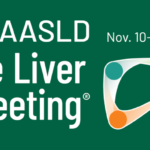
Editor’s Note:
On November 7, 2023, at 12:30 PM local time in Boston, the American Association for the Study of Liver Diseases (AASLD) held its sole pre-conference press briefing on Metabolic Associated Fatty Liver Disease (MASLD). Chaired by conference president Professor Norah Terrault, the event featured presentations by Professor Phuc Le of the Cleveland Clinic Lerner College of Medicine, who discussed his team’s model predicting the changing prevalence of liver diseases in the U.S. until 2050. Dr. Zobair Younossi, the Global NASH Council Chairman, presented the latest findings on the correlation between food insecurity and MAFLD in American adolescents. Additionally, Dr. Rohit Loomba shared insights into the renaming of Non-Alcoholic Fatty Liver Disease (NAFLD) and the challenges associated with it.
01 Study Predicts Continuous Rise in MASLD Incidence in the U.S.
Professor Phuc Le indicated that the incidence of a prevalent form of chronic liver disease is expected to steadily increase over the next 25 years, posing a significant burden on the healthcare system. According to their new model, the team predicts that by 2050, the number of liver cancer cases in the U.S. will almost double, and the demand for liver transplants will increase nearly twofold.
The rising incidence of obesity and diabetes is considered a contributing factor to the increased prevalence of Metabolic Associated Fatty Liver Disease (MASLD). Recently, medical organizations worldwide have renamed Non-Alcoholic Fatty Liver Disease (NAFLD) to “MASLD” due to its close association with metabolic dysfunction, aiming to reduce the stigma associated with the term “Non-Alcoholic Fatty Liver Disease” and better describe the etiology of this condition affecting over 30% of the global population.
Professor Phuc Le, the lead researcher of the study, highlighted that with the increasing rates of diabetes and obesity, MASLD may become a primary reason for liver transplants in the United States. The research created a mathematical model predicting annual population trends, MASLD incidence, and progression. Currently, hepatitis C is the most common cause of liver disease, followed by damage from long-term alcohol consumption.
According to the model’s predictions, MASLD incidence will rise by 23%, with the adult prevalence in 2020 being approximately 27.8%, expected to climb to 34.3% by 2050. The rate of MASLD progressing to liver cancer will also increase, with an estimated annual increase of liver cancer cases nearly doubling from 10,400 in 2020 to around 19,300 in 2050. Liver transplant demand is projected to almost double, rising from 1,700 cases in 2020 to 4,200 cases in 2050.
“Liver diseases often develop silently, with symptoms appearing only in the later stages. Therefore, raising awareness of liver diseases is crucial to prevent complications,” stated AASLD President Dr. Norah Terrault. “Early detection and timely intervention can bring about changes, and that’s why AASLD is committed to providing clinicians with the knowledge and skills needed to improve health outcomes.”
On Saturday, November 11, at 1:00 PM Eastern Time, Dr. Phuc Le presented the study’s results titled “Projection of the Clinical Burden of NAFLD (MASLD) in US Adults from 2020-2050: A Modeling Study” (Abstract Number 2245-A).
02 Food Insecurity and its Relation to MAFLD in U.S. Adolescents
A study set to be presented at the AASLD 2023 annual meeting reveals that adolescents from low-income families lacking food security are twice as likely to develop Metabolic Associated Fatty Liver Disease (MAFLD) compared to their peers with better access to food. This disparity may be attributed to the former group’s reliance on low-cost, highly processed foods. Participation in the Supplemental Nutrition Assistance Program (SNAP) seems to offer protection against liver diseases for adolescents.
“The link between food insecurity and MASLD is most likely a result of being unable to access a nutritionally balanced diet and having to purchase low-cost foods,” said Professor Zobair Younossi, the lead author of the study and Chair of the Beatty Liver and Obesity Research Program at Inova Health System. “These factors may contribute to a vicious cycle of binge eating, overconsumption of highly processed and sugary foods and beverages among these adolescents.”
Researchers analyzed demographic, nutritional, physical activity, and food insecurity data from 771 adolescents surveyed in the U.S. National Health and Nutrition Examination Survey from 2017 to 2018. The results showed that the prevalence of MAFLD among adolescents identified as food insecure was nearly 19%, almost double that of adolescents without food insecurity factors. Adolescents lacking food security also had a higher proportion of advanced liver disease, with 2.8%, compared to 0.3% in the group with less focus on food access.
Almost all (98.9%) adolescents identified as food insecure reported relying on low-cost foods for survival or being unable to obtain a balanced diet, with over half stating they did not have access to enough food.
Analysis revealed that, based on food insecurity status, there were no differences in metabolic diseases such as obesity and type 2 diabetes, even though these factors are independently associated with MASLD. MASLD involves fat accumulation in the liver.
“This study suggests that more work needs to be done to ensure that all those eligible for the SNAP program can benefit,” said Dr. Zobair Younossi. “The SNAP program is an intervention tool that can help improve the dietary conditions of adolescents. However, we must continue efforts to eliminate systemic and structural barriers to better utilize the SNAP program and encourage more physical activity in school and extracurricular activities for adolescents.”
Dr. James Paik presented the study’s results titled “Food Insecurity and Household Income Substantially Increase the Risk of NAFLD Among Adolescent Children in the United States” (Abstract Number 176) on Sunday, November 12, at 11:00 AM Eastern Time.


